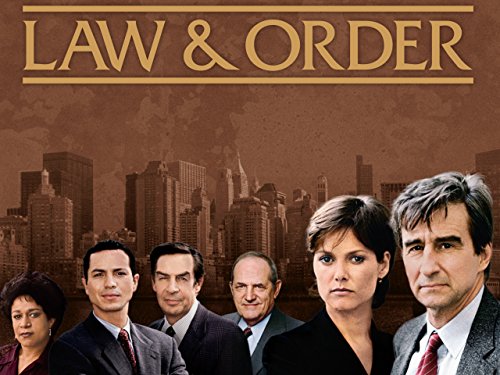Television has been a fertile ground for storytelling, and one series that left an indelible mark on the landscape of legal dramas is “Law & Order.” Premiering in 1990, this groundbreaking show, created by Dick Wolf, not only captivated audiences with its gripping narratives but also set a precedent for the procedural crime genre. In this extensive exploration, we delve into the origins, impact, characters, and enduring legacy of “Law & Order” (1990).
Section 1: Genesis of “Law & Order”
1.1 Conceptualization by Dick Wolf
The inception of “Law & Order” can be traced back to the creative mind of Dick Wolf, a seasoned producer with a keen interest in crime dramas. Wolf envisioned a show that would not only depict the investigation and legal processes but would also focus on the intricate interplay between law enforcement and the judicial system.
1.2 Premiering on NBC
In September 1990, “Law & Order” made its debut on NBC, introducing viewers to a unique narrative structure that would become its trademark. Each episode was divided into two parts: the first half focused on the police investigation, while the latter half delved into the legal proceedings, offering a comprehensive view of the criminal justice system.
Section 2: The Pioneering Format
2.1 Split-Story Format
One of the distinguishing features of “Law & Order” was its split-story format. The first segment, often referred to as the “police procedural” part, showcased detectives solving the crime and making arrests. The second segment, the “legal procedural,” shifted to the prosecution and trial, exploring the complexities of the legal battle.
2.2 Episodic Structure
The episodic nature of “Law & Order” made it accessible to a wide audience. Each episode presented a self-contained story, allowing viewers to tune in without the need for extensive knowledge of previous plotlines. This structure contributed to the show’s longevity and appeal.
Section 3: Characters and Cast
3.1 Detective Duos
The show featured a rotating cast of detectives, each paired with a different partner. Notable detective duos included Detectives Max Greevey and Mike Logan, Detectives Lennie Briscoe and Rey Curtis, and the iconic pairing of Detectives Elliot Stabler and Olivia Benson in later seasons.
3.2 Legal Eagles
On the legal side, “Law & Order” showcased a gallery of skilled attorneys and district attorneys, each bringing a unique perspective to the courtroom. Prominent characters included Executive Assistant District Attorney Ben Stone, played by Michael Moriarty, and Assistant District Attorneys Jack McCoy and Abbie Carmichael, portrayed by Sam Waterston and Angie Harmon, respectively.
Section 4: Impact and Critical Acclaim
4.1 Realism and Grit
“Law & Order” was lauded for its commitment to realism and attention to detail. The show drew inspiration from actual criminal cases, infusing a sense of authenticity into its narratives. The gritty portrayal of crime and its consequences resonated with audiences and critics alike.
4.2 Social Relevance
Beyond its engaging storytelling, “Law & Order” often tackled socially relevant issues. Episodes explored topics such as racial tension, political corruption, and ethical dilemmas within the justice system. The show’s willingness to address these issues contributed to its cultural impact.
Section 5: Notable Cases and Crossovers
5.1 Memorable Cases
Throughout its extensive run, “Law & Order” presented viewers with a multitude of memorable cases. From high-profile murder trials to complex conspiracies, the show consistently delivered gripping and thought-provoking stories that kept audiences on the edge of their seats.
5.2 Crossovers and Spin-Offs
“Law & Order” became a cornerstone for the “Law & Order” franchise, inspiring numerous spin-offs and crossover events. “Law & Order: Special Victims Unit” (SVU) emerged as one of the most successful spin-offs, focusing on crimes of a more heinous nature. The interconnected universe created by Dick Wolf expanded, solidifying the franchise’s place in television history.
Section 6: Enduring Legacy
6.1 Longevity and Cultural Impact
“Law & Order” enjoyed an impressive run of 20 seasons, making it one of the longest-running primetime dramas in television history. Its impact on the crime procedural genre cannot be overstated, influencing subsequent shows and shaping audience expectations for legal dramas.
6.2 Awards and Recognition
The show garnered critical acclaim and received numerous awards, including the prestigious Peabody Award for its contribution to television excellence. The performances of the cast, the writing, and the innovative format were all recognized by industry accolades.
Section 7: Beyond the Screen
7.1 Syndication Success
Even after the original run concluded, “Law & Order” found success in syndication. Its enduring popularity led to continued reruns, introducing the series to new generations of viewers and solidifying its status as a television classic.
7.2 Cultural References
“Law & Order” left an indelible mark on popular culture. The show’s signature sound effect, known as the “dun-dun,” became iconic and is often humorously referenced in various media. The show’s impact extends beyond television, influencing discussions about crime and justice in wider society.
Conclusion: A Television Legend
“Law & Order” (1990) stands as a television legend, pioneering a format that redefined legal dramas. From its innovative storytelling structure to its realistic portrayal of crime and justice, the show left an enduring legacy that continues to resonate with audiences. As the legal gavel of “Law & Order” fell for the last time, its impact on television storytelling and its cultural significance remain, marking it as a true trailblazer in the realm of crime procedurals.
